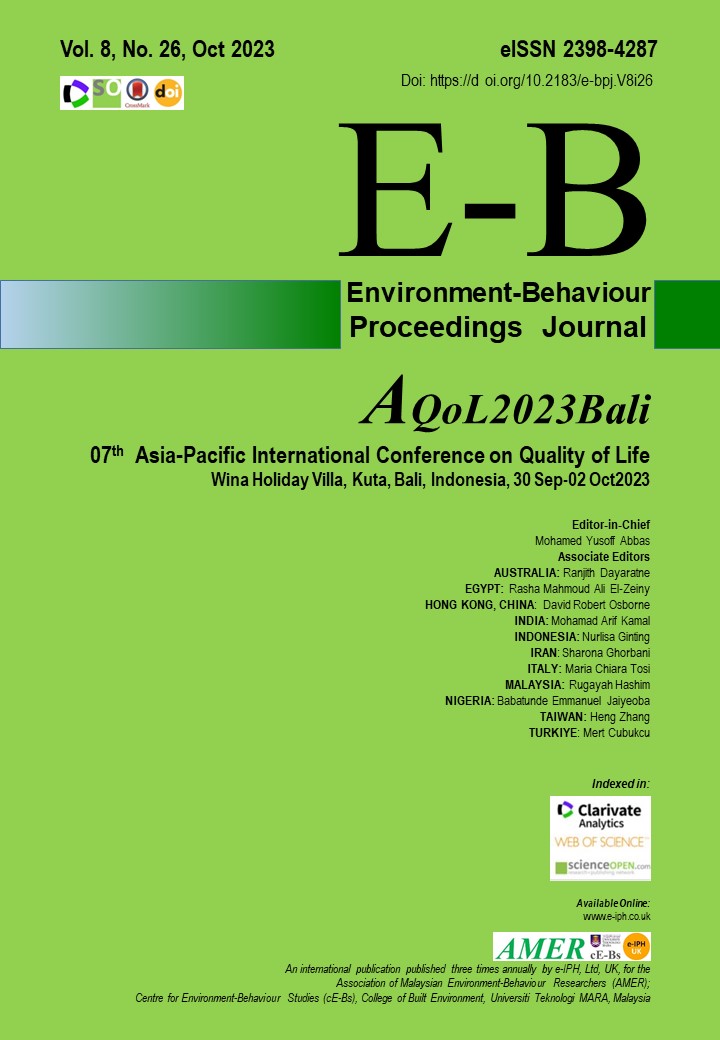Cyberbullying in the Social Media Environment: Investigating Young Adults' Experiences in Malaysia
DOI:
https://doi.org/10.21834/e-bpj.v8i26.5161Keywords:
Cyberbullying, Language Use, Young Adults, Social MediaAbstract
The rise of social media in Malaysia has transformed communication, yet it has also ushered in cyberbullying. This study explores cyberbullying experiences among Malaysian young adults, focusing on their engagement, language use, and coping mechanisms. Data from 148 university students reveal that cyberbullying is prevalent on platforms like Facebook which is mainly instigated by strangers, online contacts, classmates, and friends. The most common cyberbullying types identified are physical-related and intelligence-related. While most participants acknowledged the harm of offensive language, a significant portion admitted to ignoring incidents, emphasising the need for targeted interventions and education to combat cyberbullying among Malaysian youth.
References
Abdullah, A., & Nawang, N. I. (2019). Offensive Content on The Internet: The Malaysian Legal Approach. International Journal of Innovation, Creativity and Change, 5(2), 367-376.
Adebayo, D. O., Ninggal, M. T., & Bolu-Steve, F. N. (2020). Relationship between Demographic Factors and Undergraduates' Cyberbullying Experiences in Public Universities in Malaysia. International Journal of Instruction, 13(1), 901-914. DOI: https://doi.org/10.29333/iji.2020.13158a
Albikawi, Z. F. (2023). Anxiety, Depression, Self-Esteem, Internet Addiction and Predictors of Cyberbullying and Cybervictimization among Female Nursing University Students: A Cross Sectional Study. International Journal of Environmental Research and Public Health, 20(5), 4293. DOI: https://doi.org/10.3390/ijerph20054293
Azman, N. F., & Zamri, N. A. K. (2022, September). Conscious or Unconscious: The Intention of Hate Speech in Cyberworld—A Conceptual Paper. In Proceedings (Vol. 82, No. 1, p. 29). MDPI. DOI: https://doi.org/10.3390/proceedings2022082029
Azumah, S. W., Elsayed, N., ElSayed, Z., & Ozer, M. (2023). Cyberbullying in Text Content Detection: An Analytical Review. arXiv preprint arXiv:2303.10502. DOI: https://doi.org/10.1080/1206212X.2023.2256048
Balakrishnan, V. (2015). Cyberbullying among young adults in Malaysia: The roles of gender, age and Internet frequency. Computers in Human Behavior, 46, 149-157. DOI: https://doi.org/10.1016/j.chb.2015.01.021
Balakrishnan, V., & Fernandez, T. (2018). Self-esteem, empathy and their impacts on cyberbullying among young adults. Telematics and Informatics, 35(7), 2028-2037. DOI: https://doi.org/10.1016/j.tele.2018.07.006
Baruah, H., Dashora, P., & Parmar, A. (2017). Impact of cyberbullying on psychological health of adolescents. International Journal of Humanities and Social Sciences (IJHSS), 6(4), 137-144.
Eyuboglu, M., Eyuboglu, D., Pala, S. C., Oktar, D., Demirtas, Z., Arslantas, D., & Unsal, A. (2021). Traditional school bullying and cyberbullying: Prevalence, the effect on mental health problems and self-harm behavior. Psychiatry research, 297, 113730. DOI: https://doi.org/10.1016/j.psychres.2021.113730
Hinduja S., & Patchin J.W. (2014). Bullying beyond the schoolyard: preventing and responding to cyberbullying. Corwin press.
Hinduja, S., & Patchin, J. W. (2018). Cyberbullying: Identification, prevention, and response. Cyberbullying Research Center.
Khairi, A. K., Li, W., Yeo, S. H., Tong, Y. S., Nazri, M., Rahman, B. A., & Motevalli, S. (2022). The Importance of Emotional Competence in Preventing Cyberbullying: The Role of Family as Moderator. International Journal of Academic Research in Business and Social Sciences, 12(4), 262-278. DOI: https://doi.org/10.6007/IJARBSS/v12-i4/13062
Kowalski, R. M., Giumetti, G. W., Schroeder, A. N., & Lattanner, M. R. (2014). Bullying in the digital age: A critical review and meta-analysis of cyberbullying research among youth. Psychological Bulletin, 140(4), 1073-1137. DOI: https://doi.org/10.1037/a0035618
Low, W. L., & Gill, D. K. (2022). Malaysia's Approach towards Cyber Bullying: The Existing Framework. J. Legal Ethical & Regul. Isses, 25, 1.
Mishna, F., Khoury-Kassabri, M., Gadalla, T., & Daciuk, J. (2012). Risk factors for involvement in cyberbullying: Victims, bullies, and bully-victims. Children and Youth Services Review, 34(1), 63-70. DOI: https://doi.org/10.1016/j.childyouth.2011.08.032
Razali, N. A., Nawang, N. I., & Mohamad, S. S. N. (2022). Cyberbullying in Malaysia: An Analysis of Existing Laws. International Journal of Law, Government and Communication, 7(30), 124-135. DOI: https://doi.org/10.35631/IJLGC.730011
Shivani, S. (2020). Cyberbullying cases spike due to high online usage. The Sun. https://www.thesundaily.my/local/p5-lead-jan-19-cyber-bullying-BC8774131
Yusuf, S., Mohamed Al-Majdhoub, F., Mubin, N. N., Chaniago, R. H., & Rahim Khan, F. (2021). Cyber aggression-victimization among Malaysians youth. Asian Journal of University Education (AJUE), 7(1), 240-260. DOI: https://doi.org/10.24191/ajue.v17i1.12616
Zainudin, N. M., Zainal, K. H., Hasbullah, N. A., Wahab, N. A., & Ramli, S. (2016, May). A review on cyberbullying in Malaysia from digital forensic perspective. In 2016 International Conference on Information and Communication Technology (ICICTM) (pp. 246-250). IEEE. DOI: https://doi.org/10.1109/ICICTM.2016.7890808
Zhu, C., Huang, S., Evans, R., & Zhang, W. (2021). Cyberbullying among adolescents and children: a comprehensive review of the global situation, risk factors, and preventive measures. Frontiers in public health, 9, 634909. DOI: https://doi.org/10.3389/fpubh.2021.634909
Downloads
Published
How to Cite
Issue
Section
License
Copyright (c) 2023 Shahidatul Maslina Mat So'od, Lena Ramamurthy, Noor Syamimie Mohd Nawi, Syakirah Shafien, Siti Fathihah Abd Latif, Prof. Dr. Zuraidah Mohd Don, Wandi Syahfutra

This work is licensed under a Creative Commons Attribution-NonCommercial-NoDerivatives 4.0 International License.





